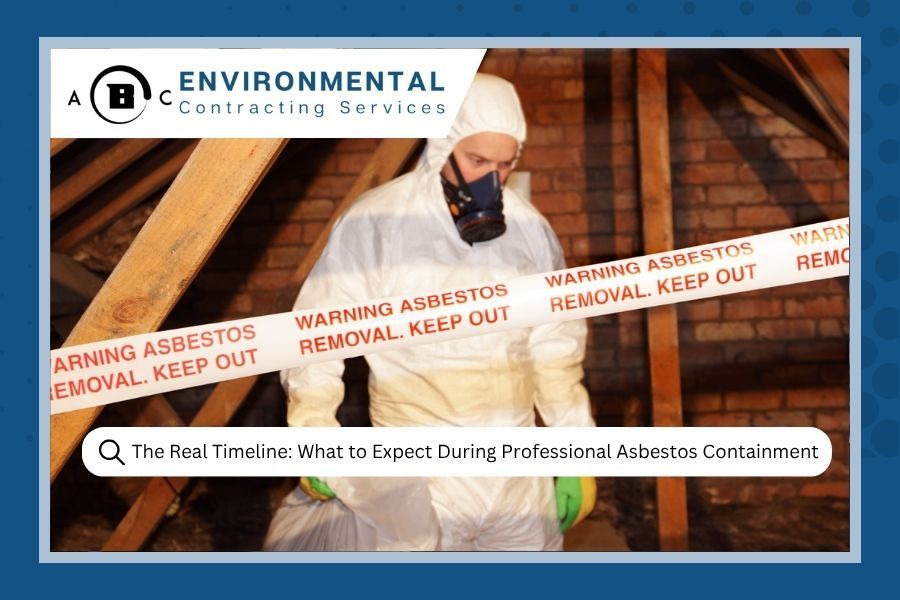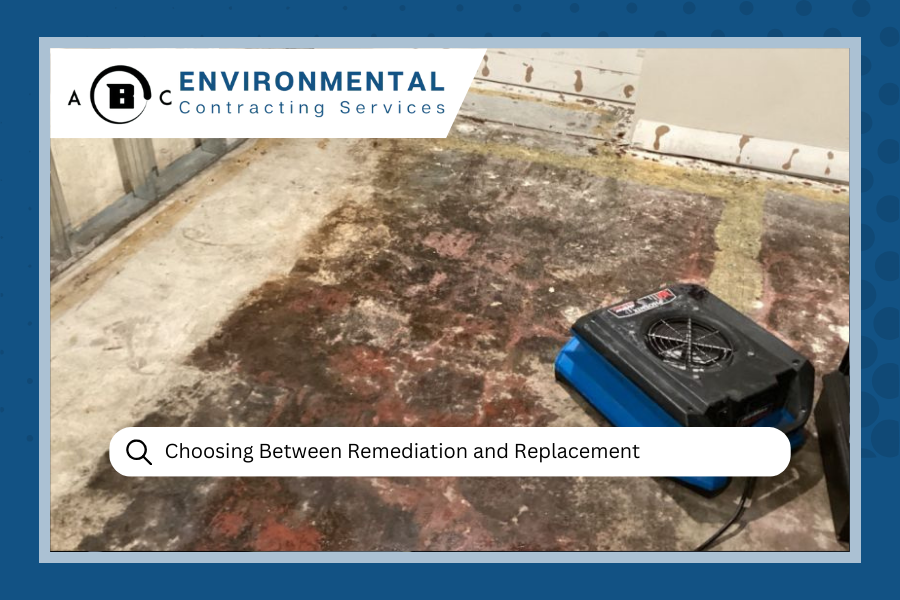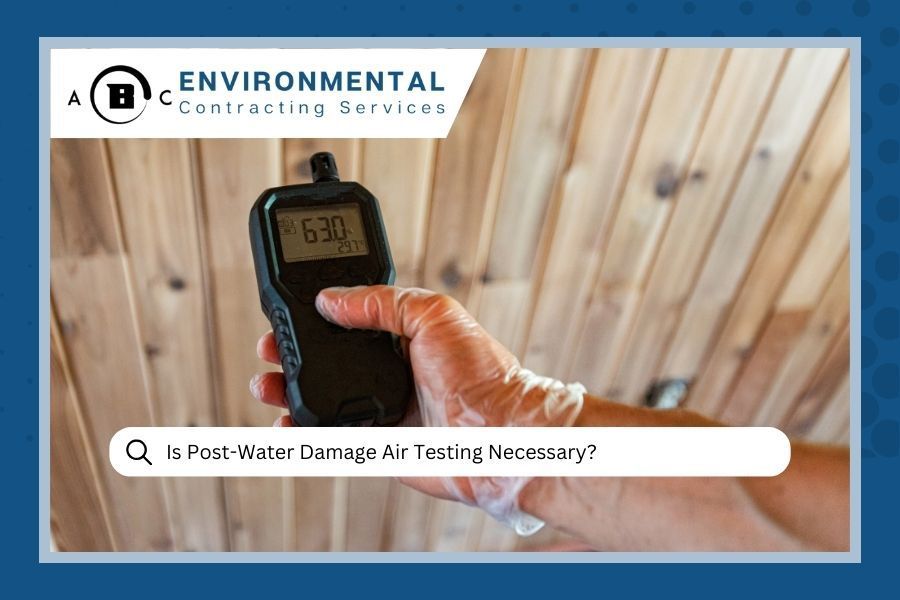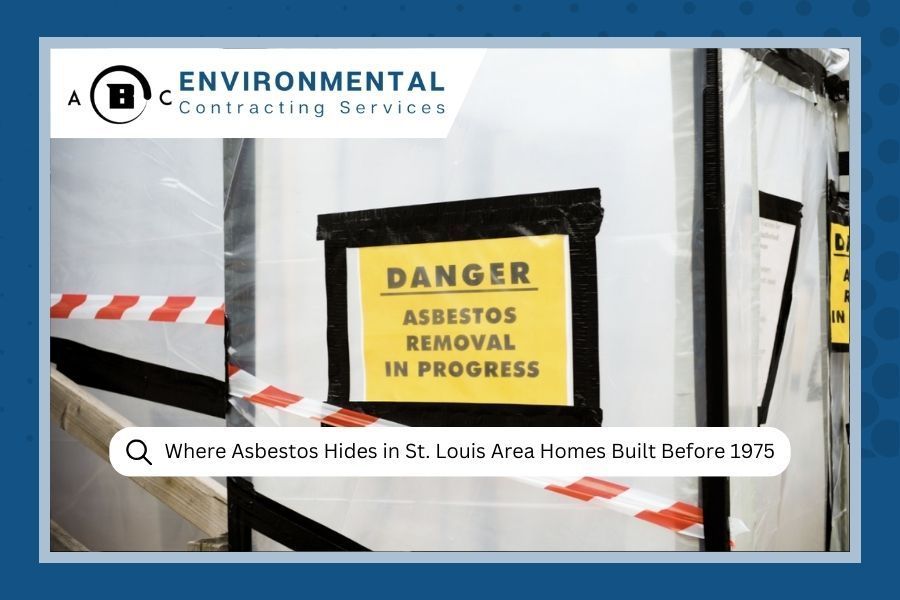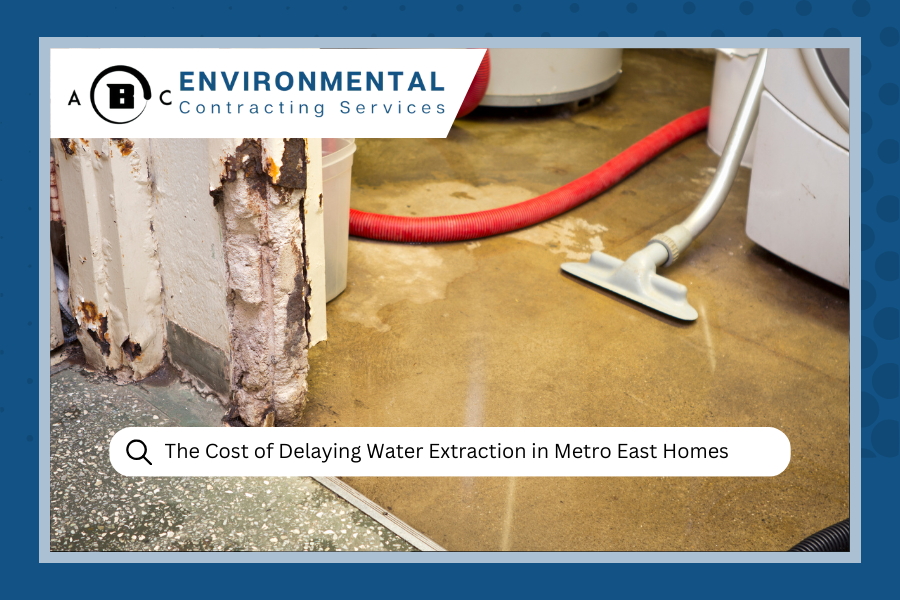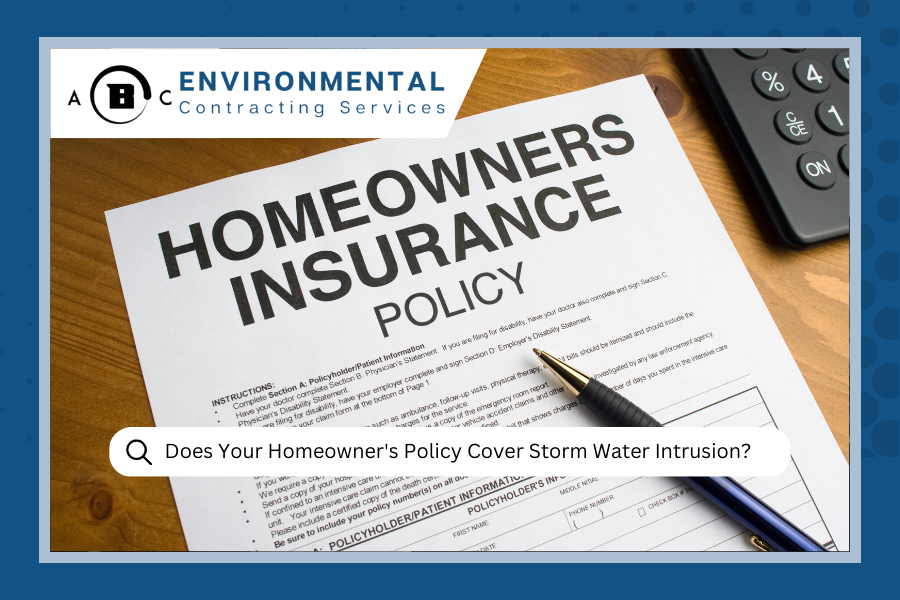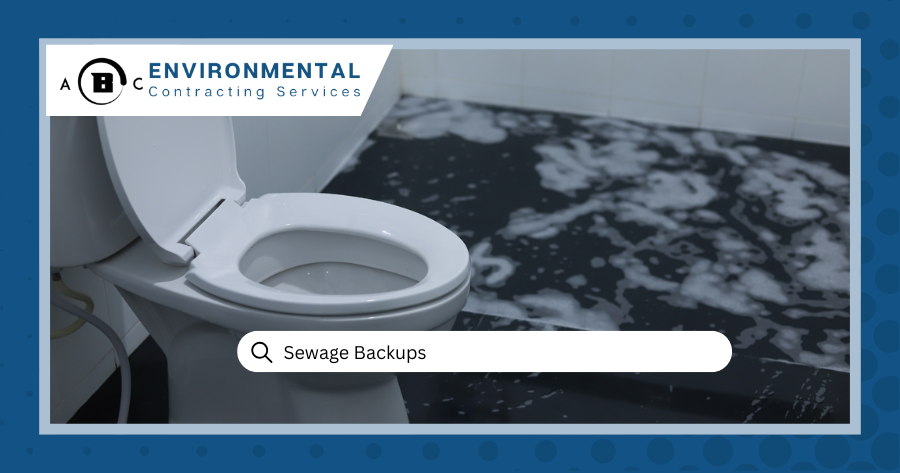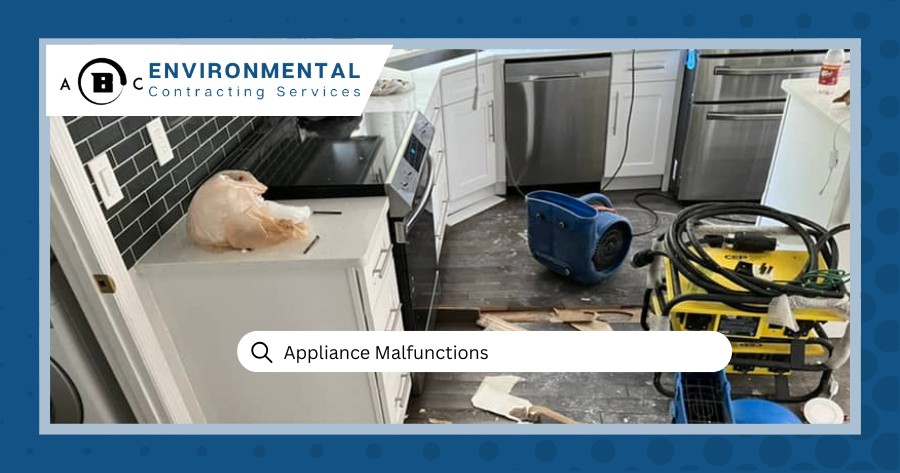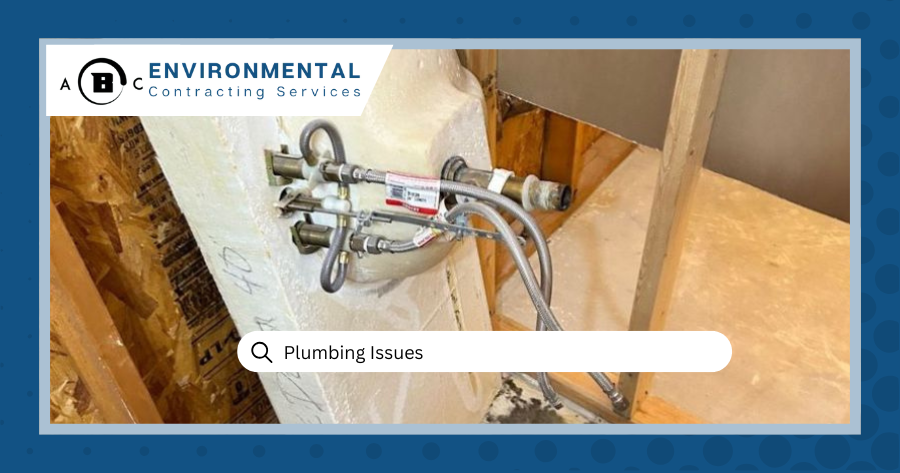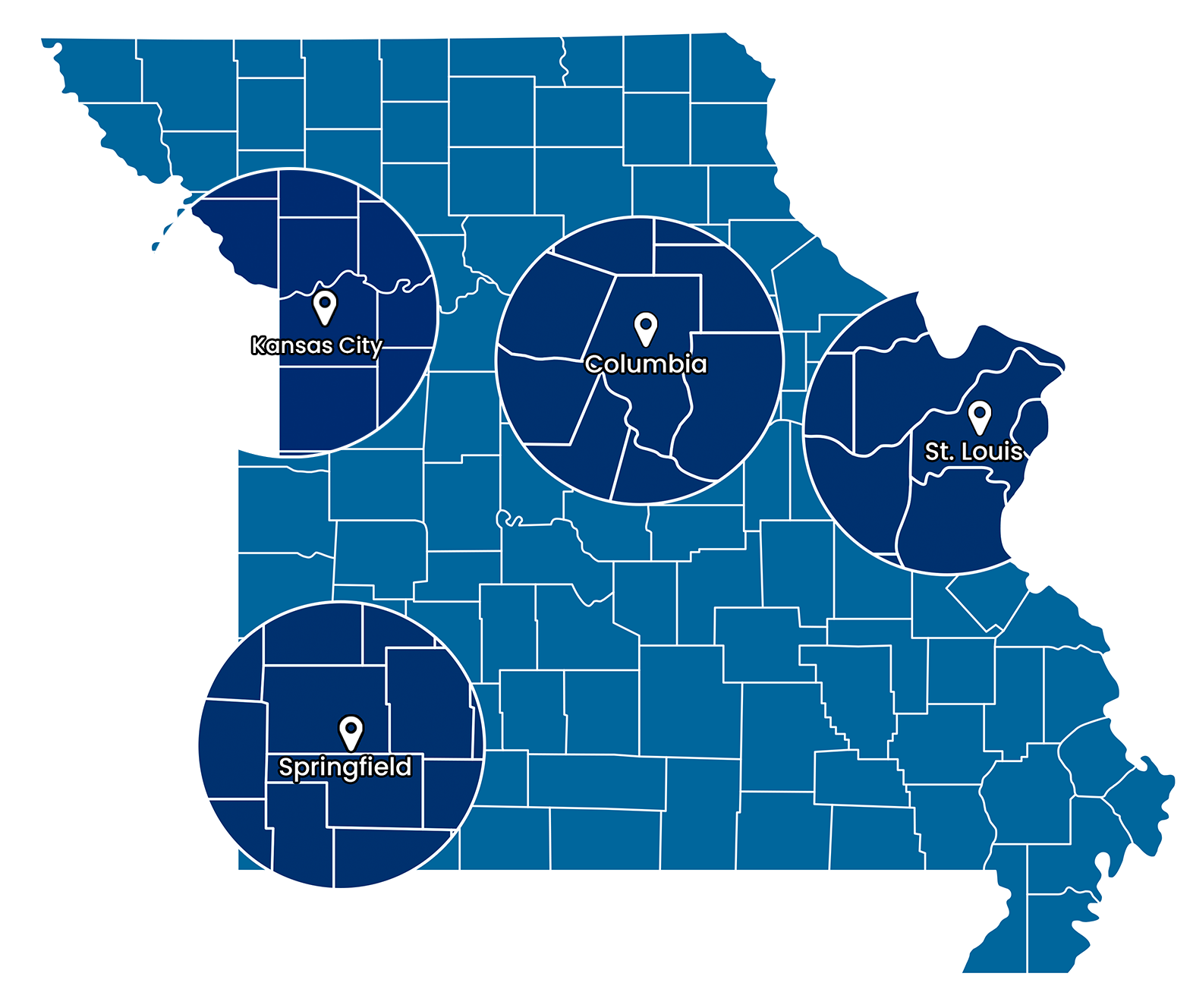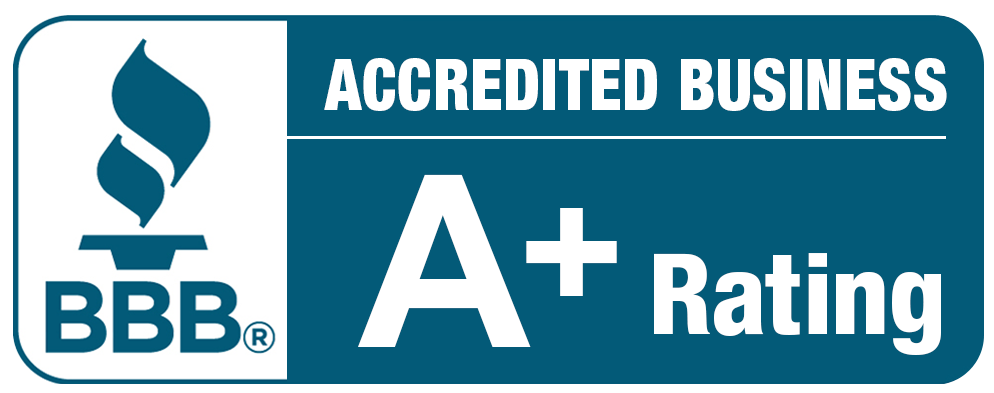
Mold Growth Rates in St. Louis Humidity: The 48-Hour Critical Window
Jump to:
You've just dealt with a pipe leak, a flooded basement, or storm water that crept into your home. Maybe it was from those heavy November rains we've been getting, or your heating system just kicked on and revealed a hidden leak. You've mopped up what you can see, and everything looks okay. But here's the thing about water damage in the St. Louis area: what you can't see is often the bigger problem.
At ABC Environmental Contracting Services, we talk to homeowners every week who didn't realize how quickly things can go sideways after water damage. The truth is, mold doesn't need much time to make itself at home. In our humid climate, you've got about 48 hours before conditions become ideal for mold to take root and spread. Once it gets going, mold remediation becomes more complicated, more expensive, and a lot more stressful.
Why November in St. Louis Is Prime Time for Mold
November in St. Louis brings its own set of challenges. Fall rains are still rolling through, heating systems are kicking on for the first time in months, and we're heading into freeze season. All of these create perfect conditions for water damage and rapid mold growth.
Even as temperatures drop, indoor humidity stays high thanks to poor ventilation, heating systems cycling on and off, and those cool, damp basements that never quite dry out. Mold spores , which are basically everywhere all the time, only need three things to grow: moisture, warmth, and organic material like drywall, wood, or carpet. Your home has all three in abundance after any kind of water intrusion.
The combination of our clay-heavy soil, fall storms, and homes with heating systems running means basements stay damp and crawl spaces trap moisture. When you add fresh water damage to an already humid indoor environment, it's like putting mold spores on fast-forward.
The 48-Hour Window: What's Really Happening
Here's where things get real. Within the first 24 hours after water damage, mold spores start to settle on wet surfaces. They're not visible yet, but they're there, beginning the colonization process. Between 24 and 48 hours, those spores start germinating if the moisture level stays high enough.
By hour 48, you're looking at active mold growth. It might still be microscopic, but it's spreading. By day three or four, you might start seeing discoloration on walls or smelling that musty, earthy odor that signals mold has moved in.
Mold Growth Timeline After November Water Damage
Mold spores settle on wet surfaces and begin colonization process
Spores germinate in high-moisture conditions (still invisible)
Active mold growth begins spreading through porous materials
Visible discoloration and musty odors become noticeable

Mold growth on trim and drywall after water damage was left untreated beyond the critical 48-hour window.
Need help fast?
If you've experienced water damage in the last day or two, don't wait. Call ABC Environmental Contracting Services at (314) 668-1509. We can assess the situation, measure moisture levels, and start drying out your space before mold gets a foothold.
Contact Us NowFall and Winter Mold Growth Patterns
Mold doesn't grow at the same rate everywhere. In drier climates, you might have a little more breathing room. But here in the Metro East during fall and early winter, conditions create unique challenges. As we transition into November, heating systems kick on and create warm indoor air that holds moisture, especially in poorly ventilated spaces.
Late fall storms still bring heavy rain and flooding, especially in low-lying areas near the Mississippi and Missouri rivers. And as we head toward winter, the real danger begins. When pipes freeze and then burst, moisture can linger unnoticed for days or weeks in attics, crawl spaces, and behind walls. Different types of mold thrive in different conditions. Stachybotrys , often called black mold, prefers consistently wet environments like the kind you'd find after plumbing issues or severe flooding.

Bathroom mold growth thrives in St. Louis humidity, especially after water damage or poor ventilation.
How to Stop Mold Before It Starts
The best way to deal with mold is to never let it get started. That means acting fast after any water damage and controlling humidity in your home year-round.
Immediate Actions After Water Damage
| Timeframe | Action | Why It Matters |
|---|---|---|
| 0-1 hours | Shut off water source and remove standing water | Stops additional moisture from entering |
| 1-4 hours | Remove wet materials like rugs and furniture | Reduces porous material that can harbor mold |
| 4-12 hours | Set up fans and dehumidifiers | Begins drying and lowers humidity levels |
| 12-24 hours | Check walls, floors, hidden areas for moisture | Identifies problem spots needing attention |
| 24-48 hours | Call professionals if drying isn't complete | Ensures thorough moisture removal before mold starts |
You can't always see where water has traveled. It seeps behind baseboards, under flooring, and into wall cavities. Professional moisture meters and thermal imaging cameras can find hidden wet spots you'd never know were there.
Year-Round Prevention Tips
Control indoor humidity by running dehumidifiers in basements, keeping levels below 50%. Use exhaust fans in bathrooms and kitchens, especially as you start cooking more for the holidays. Check your HVAC system regularly, as clogged filters can trap moisture and spread mold spores. This is especially important now that your heating system is running daily.
Make sure gutters are clear of fall leaves, downspouts drain away from the foundation, and grading slopes away from the house. Insulate exposed pipes before the first hard freeze. Fix leaks immediately. Even a slow drip can create enough moisture for mold to grow, especially if it's been an issue for a while as discussed in our post about appliance malfunctions.
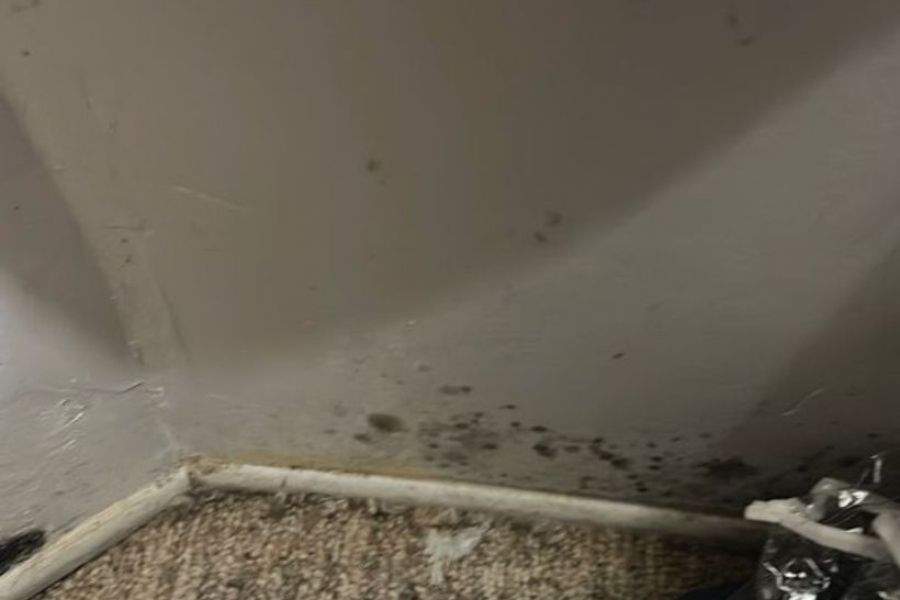
Bedroom drywall showing extensive mold growth from hidden moisture that wasn't addressed within the 48-hour window.
Emergency Response Protocol
Safety first. Before entering an area with standing water, make sure it's safe. If water is near electrical outlets or appliances, turn off the power at the breaker box. Stop the water source if possible, document everything with photos for insurance, then remove standing water using a wet/dry vacuum or towels.
Start drying immediately. Open windows if weather allows, set up fans to create airflow, and run dehumidifiers continuously. If the affected area is larger than 10 square feet or you're dealing with contaminated water, call us. We've seen what happens when people wait too long.
At ABC Environmental Contracting Services, we use commercial-grade equipment to extract water, dry out structures, and monitor moisture levels until everything is completely dry. Our team serves the entire St. Louis metro area , and we're ready to respond quickly when you need us.
Frequently Asked Questions
Why does mold grow faster in St. Louis than in other cities?
Our region's combination of variable indoor humidity (especially during heating season), frequent weather events, and temperature fluctuations creates perfect conditions where spores can germinate faster than in drier climates.
If I dry visible water within 48 hours, am I safe from mold?
Not necessarily, because water travels into hidden spaces like wall cavities and under flooring where household fans can't reach it.
Does the 48-hour rule apply to all seasons in St. Louis?
Yes, though late fall and winter bring unique risks like frozen pipe bursts that often go unnoticed longer, and heating systems that create warm, moist conditions indoors.
Can running my air conditioner help prevent mold after water damage?
AC helps reduce humidity but isn't enough on its own, you need targeted drying with air movers and commercial dehumidifiers.
Don't Let Mold Take Over Your Home
The 48-hour window after water damage is real, and it's not something you can afford to ignore in our humid climate. Our team at ABC Environmental Contracting Services has been serving the area for over 20 years, and we know exactly how to handle mold in these conditions.
Call us at (314) 668-1509 or contact us online. We're available 24/7 to help you stop mold before it starts.
Get Emergency Help Now
